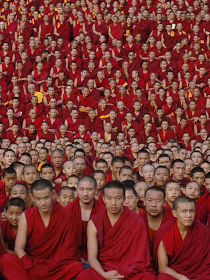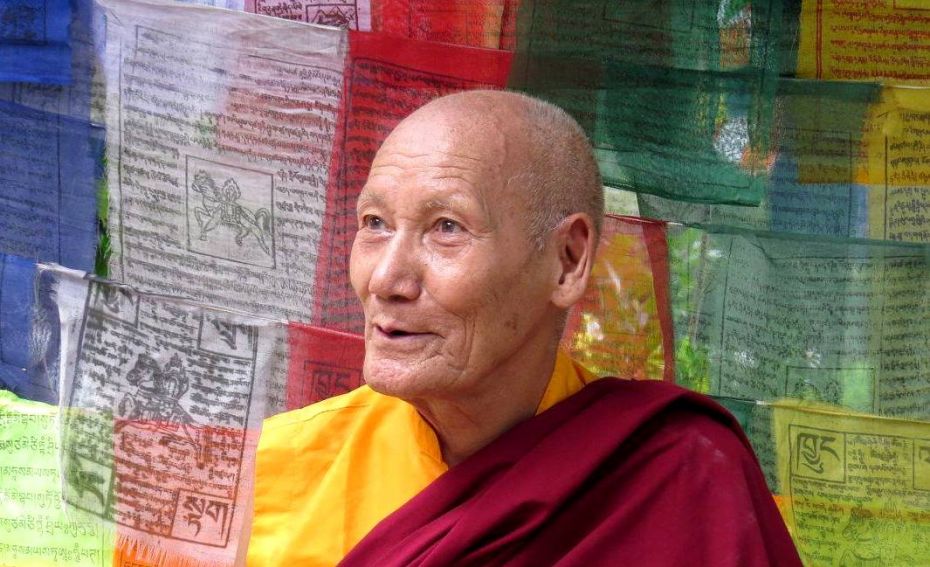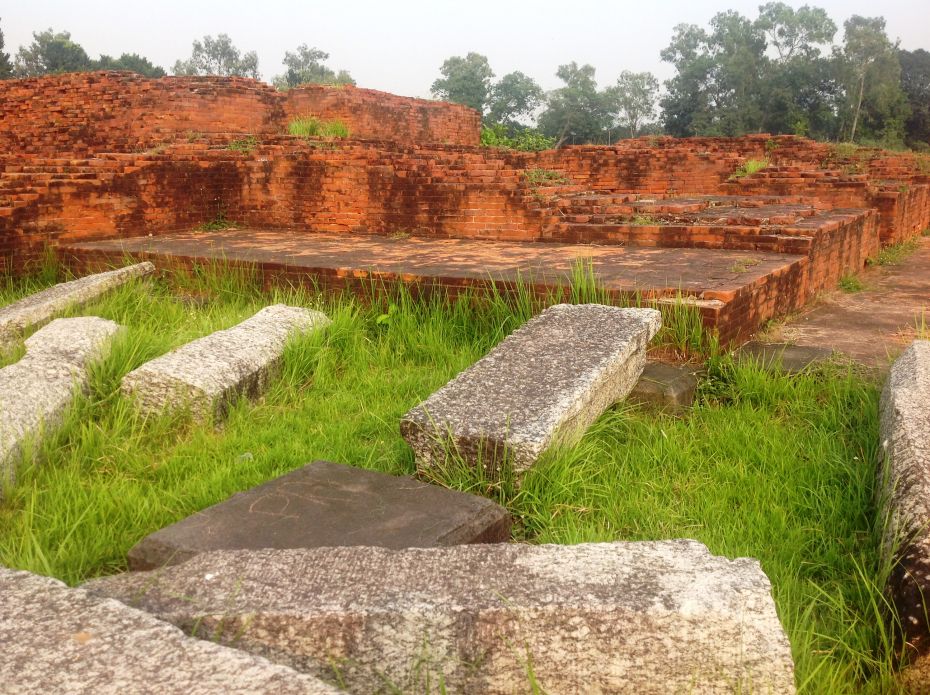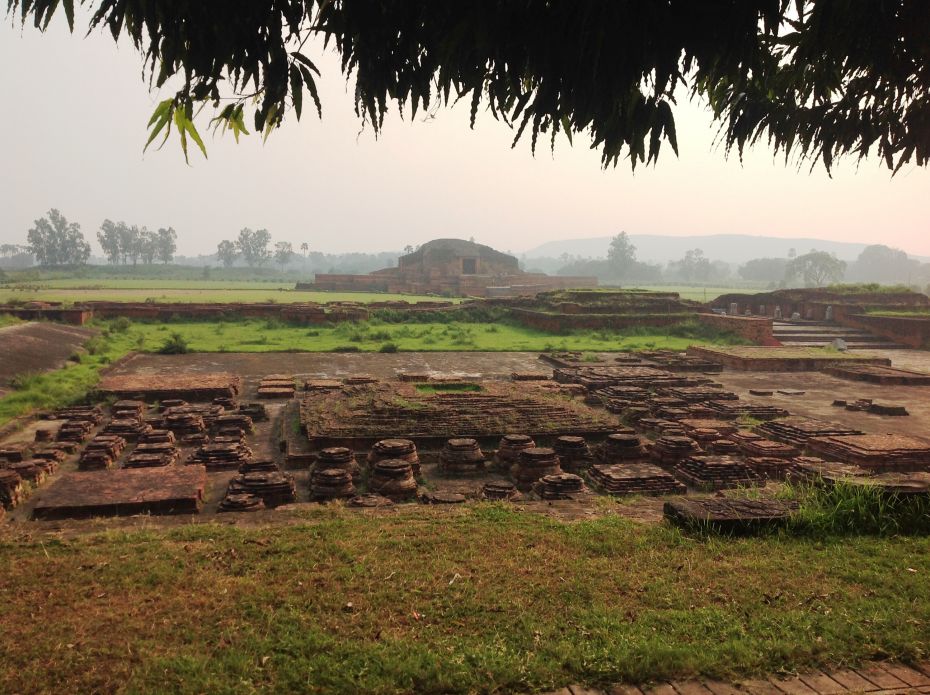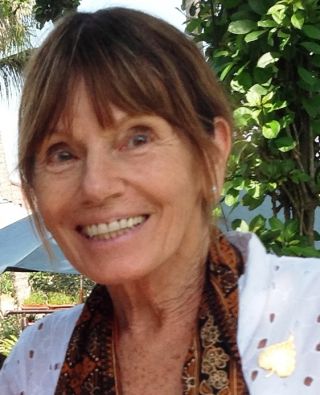- Home
- FPMT Homepage
Foundation for the Preservation of the Mahayana Tradition
The FPMT is an organization devoted to preserving and spreading Mahayana Buddhism worldwide by creating opportunities to listen, reflect, meditate, practice and actualize the unmistaken teachings of the Buddha and based on that experience spreading the Dharma to sentient beings. We provide integrated education through which people’s minds and hearts can be transformed into their highest potential for the benefit of others, inspired by an attitude of universal responsibility and service. We are committed to creating harmonious environments and helping all beings develop their full potential of infinite wisdom and compassion. Our organization is based on the Buddhist tradition of Lama Tsongkhapa of Tibet as taught to us by our founders Lama Thubten Yeshe and Lama Thubten Zopa Rinpoche.
- Willkommen
Die Stiftung zur Erhaltung der Mahayana Tradition (FPMT) ist eine Organisation, die sich weltweit für die Erhaltung und Verbreitung des Mahayana-Buddhismus einsetzt, indem sie Möglichkeiten schafft, den makellosen Lehren des Buddha zuzuhören, über sie zur reflektieren und zu meditieren und auf der Grundlage dieser Erfahrung das Dharma unter den Lebewesen zu verbreiten.
Wir bieten integrierte Schulungswege an, durch denen der Geist und das Herz der Menschen in ihr höchstes Potential verwandelt werden zum Wohl der anderen – inspiriert durch eine Haltung der universellen Verantwortung und dem Wunsch zu dienen. Wir haben uns verpflichtet, harmonische Umgebungen zu schaffen und allen Wesen zu helfen, ihr volles Potenzial unendlicher Weisheit und grenzenlosen Mitgefühls zu verwirklichen.
Unsere Organisation basiert auf der buddhistischen Tradition von Lama Tsongkhapa von Tibet, so wie sie uns von unseren Gründern Lama Thubten Yeshe und Lama Thubten Zopa Rinpoche gelehrt wird.
- Bienvenidos
La Fundación para la preservación de la tradición Mahayana (FPMT) es una organización que se dedica a preservar y difundir el budismo Mahayana en todo el mundo, creando oportunidades para escuchar, reflexionar, meditar, practicar y actualizar las enseñanzas inconfundibles de Buda y en base a esa experiencia difundir el Dharma a los seres.
Proporcionamos una educación integrada a través de la cual las mentes y los corazones de las personas se pueden transformar en su mayor potencial para el beneficio de los demás, inspirados por una actitud de responsabilidad y servicio universales. Estamos comprometidos a crear ambientes armoniosos y ayudar a todos los seres a desarrollar todo su potencial de infinita sabiduría y compasión.
Nuestra organización se basa en la tradición budista de Lama Tsongkhapa del Tíbet como nos lo enseñaron nuestros fundadores Lama Thubten Yeshe y Lama Zopa Rinpoche.
A continuación puede ver una lista de los centros y sus páginas web en su lengua preferida.
- Bienvenue
L’organisation de la FPMT a pour vocation la préservation et la diffusion du bouddhisme du mahayana dans le monde entier. Elle offre l’opportunité d’écouter, de réfléchir, de méditer, de pratiquer et de réaliser les enseignements excellents du Bouddha, pour ensuite transmettre le Dharma à tous les êtres. Nous proposons une formation intégrée grâce à laquelle le cœur et l’esprit de chacun peuvent accomplir leur potentiel le plus élevé pour le bien d’autrui, inspirés par le sens du service et une responsabilité universelle. Nous nous engageons à créer un environnement harmonieux et à aider tous les êtres à épanouir leur potentiel illimité de compassion et de sagesse. Notre organisation s’appuie sur la tradition guéloukpa de Lama Tsongkhapa du Tibet, telle qu’elle a été enseignée par nos fondateurs Lama Thoubtèn Yéshé et Lama Zopa Rinpoché.
Visitez le site de notre Editions Mahayana pour les traductions, conseils et nouvelles du Bureau international en français.
Voici une liste de centres et de leurs sites dans votre langue préférée
- Benvenuto
L’FPMT è un organizzazione il cui scopo è preservare e diffondere il Buddhismo Mahayana nel mondo, creando occasioni di ascolto, riflessione, meditazione e pratica dei perfetti insegnamenti del Buddha, al fine di attualizzare e diffondere il Dharma fra tutti gli esseri senzienti.
Offriamo un’educazione integrata, che può trasformare la mente e i cuori delle persone nel loro massimo potenziale, per il beneficio di tutti gli esseri, ispirati da un’attitudine di responsabilità universale e di servizio.
Il nostro obiettivo è quello di creare contesti armoniosi e aiutare tutti gli esseri a sviluppare in modo completo le proprie potenzialità di infinita saggezza e compassione.
La nostra organizzazione si basa sulla tradizione buddhista di Lama Tsongkhapa del Tibet, così come ci è stata insegnata dai nostri fondatori Lama Thubten Yeshe e Lama Zopa Rinpoche.
Di seguito potete trovare un elenco dei centri e dei loro siti nella lingua da voi prescelta.
- 欢迎 / 歡迎
简体中文
“护持大乘法脉基金会”( 英文简称:FPMT。全名:Foundation for the Preservation of the Mahayana Tradition) 是一个致力于护持和弘扬大乘佛法的国际佛教组织。我们提供听闻,思维,禅修,修行和实证佛陀无误教法的机会,以便让一切众生都能够享受佛法的指引和滋润。
我们全力创造和谐融洽的环境, 为人们提供解行并重的完整佛法教育,以便启发内在的环宇悲心及责任心,并开发内心所蕴藏的巨大潜能 — 无限的智慧与悲心 — 以便利益和服务一切有情。
FPMT的创办人是图腾耶喜喇嘛和喇嘛梭巴仁波切。我们所修习的是由两位上师所教导的,西藏喀巴大师的佛法传承。
繁體中文
護持大乘法脈基金會”( 英文簡稱:FPMT。全名:Found
ation for the Preservation of the Mahayana Tradition ) 是一個致力於護持和弘揚大乘佛法的國際佛教組織。我們提供聽聞, 思維,禪修,修行和實證佛陀無誤教法的機會,以便讓一切眾生都能 夠享受佛法的指引和滋潤。 我們全力創造和諧融洽的環境,
為人們提供解行並重的完整佛法教育,以便啟發內在的環宇悲心及責 任心,並開發內心所蘊藏的巨大潛能 — 無限的智慧與悲心 – – 以便利益和服務一切有情。 FPMT的創辦人是圖騰耶喜喇嘛和喇嘛梭巴仁波切。
我們所修習的是由兩位上師所教導的,西藏喀巴大師的佛法傳承。 察看道场信息:
- FPMT Homepage
- News/Media
-
- Study & Practice
-
-
- About FPMT Education Services
- Latest News
- Programs
- New to Buddhism?
- Buddhist Mind Science: Activating Your Potential
- Heart Advice for Death and Dying
- Discovering Buddhism
- Living in the Path
- Exploring Buddhism
- FPMT Basic Program
- FPMT Masters Program
- FPMT In-Depth Meditation Training
- Maitripa College
- Lotsawa Rinchen Zangpo Translator Program
- Universal Education for Compassion & Wisdom
- Online Learning Center
-
- Prayers & Practice Materials
- Overview of Prayers & Practices
- Full Catalogue of Prayers & Practice Materials
- Explore Popular Topics
- Benefiting Animals
- Chenrezig Resources
- Death & Dying Resources
- Lama Chopa (Guru Puja)
- Lama Zopa Rinpoche: Compendium of Precious Instructions
- Lama Zopa Rinpoche: Life Practice Advice
- Lama Zopa Rinpoche Practice Series
- Lamrim Resources
- Mantras
- Prayer Book Updates
- Purification Practices
- Sutras
- Thought Transformation (Lojong)
- Audio Materials
- Dharma Dates - Tibetan Calendar
- Translation Services
- Publishing Services
- Ways to Offer Support
- Prayers & Practice Materials
-
- Teachings and Advice
- Find Teachings and Advice
- Lama Zopa Rinpoche Advice Page
- Lama Zopa Rinpoche: Compendium of Precious Instructions
- Lama Zopa Rinpoche Video Teachings
- ༧སྐྱབས་རྗེ་བཟོད་པ་རིན་པོ་ཆེ་མཆོག་ནས་སྩལ་བའི་བཀའ་སློབ་བརྙན་འཕྲིན།
- Podcasts
- Lama Yeshe Wisdom Archive
- Buddhism FAQ
- Dharma for Young People
- Resources on Holy Objects
- Teachings and Advice
-
-
*If a menu item has a submenu clicking once will expand the menu clicking twice will open the page.
-
-
- Centers
-
- Teachers
-
- Projects
-
-
-
-
*If a menu item has a submenu clicking once will expand the menu clicking twice will open the page.
-
-
- FPMT
-
- Shop
-
-
-
The Foundation Store is FPMT’s online shop and features a vast selection of Buddhist study and practice materials written or recommended by our lineage gurus. These items include homestudy programs, prayers and practices in PDF or eBook format, materials for children, and other resources to support practitioners.
Items displayed in the shop are made available for Dharma practice and educational purposes, and never for the purpose of profiting from their sale. Please read FPMT Foundation Store Policy Regarding Dharma Items for more information.
-
-
24
In the Footsteps of Atisha: A Pilgrimage to Vikramashila
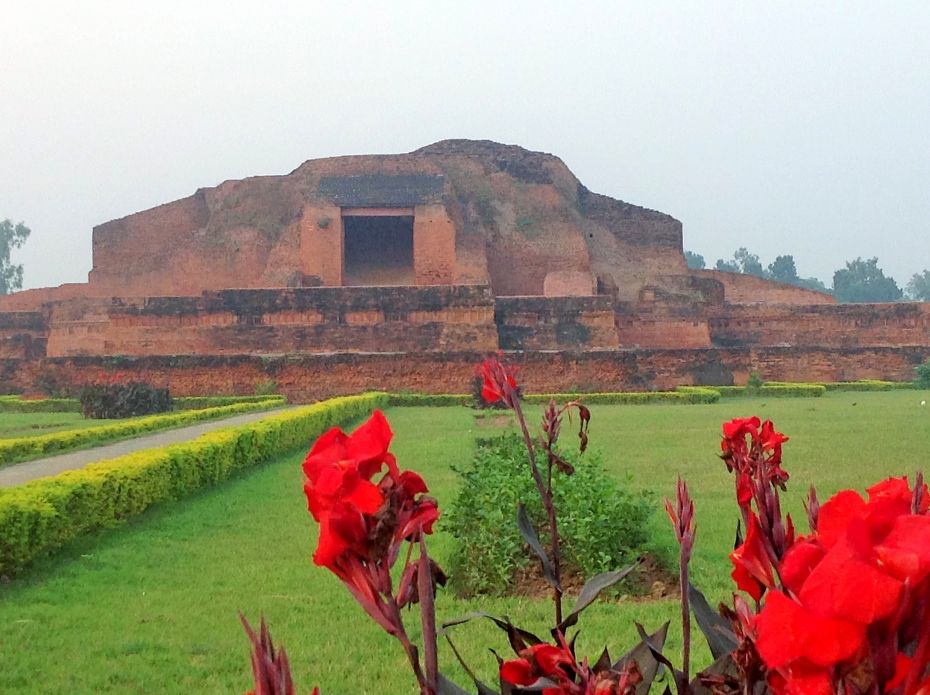
The main stupa of Vikramashila monastic university, destroyed approximately 1200 C.E. India, October 2016. Photo by Annie McGhee.
Pilgrimage needs faith. The more faith, the more happiness. Otherwise, you are just like a tourist looking at ruins. … When you go to these holy places it reminds you of impermanence. Once these places were great cities but now there are just stones. A thousand years ago these places were quite different. But even though there are just stones now these stones are so precious. — Lama Zopa Rinpoche
In October 2016, Ladakhi Lama (Ven. Thubten Tsewang), a former attendant of the great Khunu Lama Rinpoche (1894-1977), led a few people from Root Institute in Bodhgaya, India, on a pilgrimage. Ladakhi Lama, who used to live and teach in Mumbai, India, now resides in Bodhgaya. The group traveled to the ruins of Vikramashila, a one-time monastic university where the great master Atisha lived and taught. For centuries, Vikramashila and Nalanda were the two most important centers of Buddhist learning in India.
Annie McGhee reports on the trip:
I had long wanted to go to Vikramashila. I am passionate about pilgrimage to holy places, and I have been several times to the remains of the great monastic university of Muara Jambi in Sumatra, Indonesia, where Atisha spent twelve years with his precious teacher Serlingpa. So I feel a strong connection to Atisha, and Vikramashila, after all, is renowned as Atisha’s home monastery. Yet I had hesitated to go there on my own; travel in that part of India’s Bihar State can be unsafe. While staying at Root Institute, I made sincere prayers that I would find a way to go, and mentioned my hope to only two friends. I was overjoyed when suddenly Lama-la offered to lead a few of us there in an unofficial way. How exciting it was that not only would it happen, but also that Lama-la wanted to come, despite the distance and rough traveling conditions.
Vikramashila is located about 300 kilometers (185 miles) east of Bodhgaya, in what was once the famed kingdom of Magadha, where the Buddha lived. Leaving by jeep at 4 a.m., the journey on bone-jarring roads took us almost ten hours. We passed through desperately poor rural villages whose mud huts, clustered together, seemed to be crumbling back into the earth from whence they came. Clusters of cow dung chapatis, a source of fuel, clung to their walls. Young girls walked with babies on their hips. Between the heavy traffic of the towns, the more open roads of the countryside were lined with fields of rice, wheat, sugarcane, potatoes, and chili, all dotted with haystacks and brickworks. Huge oxen lumbered by, pulling carts loaded with impossibly high tiers of hay; small trucks brimmed with children and women dressed in a cacophony of multi-colored saris. Buses hurtled along, horns blaring, crammed with people, with many more sitting precariously on their roofs. Shops selling fruit and drinks appeared every so often, and the smoke from the charcoal braziers of chai stalls mingled with the ever-present dust. Old men with mahogany faces and hennaed hair gathered in little groups, chatting and smoking bidis. We saw a few small mosques with men in white haji hats signifying that they too had been pilgrims; in their case to Mecca.
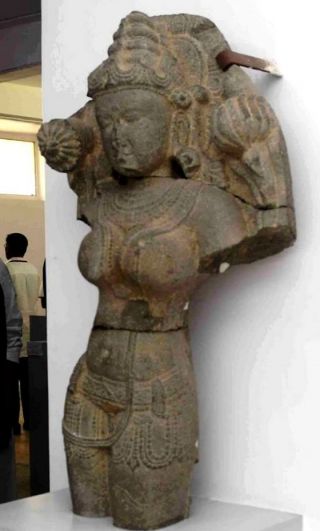
Tara statue at Vikramashila museum. Photo from Vikramashila museum via FB.
We arrived at Vikramashila around 2 p.m. and went immediately to the museum. There, we recovered from the road trip with a serene picnic on manicured lawns edged with flowers. We found the museum worth a visit. It displays hundreds of statues and other objects excavated from the site, from what looked like copper and stone malas to cooking implements to small metal statues of deities (predominantly Tara), very fine in craftsmanship and similar to old-style Nepali statues. One beautiful, nearly life-size Tara had been exquisitely carved out of polished black basalt, with the detail of her lower robes depicting mandalas interspersed with leaf and flower motifs. Sadly, the statue was headless and armless due to damage at the hands of the Turkish forces that conquered India and destroyed Vikramashila (as well as Nalanda) around 1200 C.E.
After a visit to the museum, we explored the grounds of the ancient university itself. As we entered, we saw the remains of many votive stupas. Lama-la quietly remarked that they might be all that was left of stupas that held the relics of the 108 arhats who resided at Vikramashila. We walked toward the main temple along a processional way where the remains of huge granite pillars, some over a meter (3 feet) in circumference, once supported the gatehouse roofs.
From there, we came to a vast quadrangle where the main temple once stood. The quadrangle was reputed to have been able to hold 8,000 monks. Around it on all four sides, excavations have unearthed the monks’ cells. There were 208 cells, fifty-two on each side, that opened onto a common verandah, which had steps descending into the quadrangle. We saw round tower-like projections on the buildings’ corners, and smaller projections on the sides, about 24 meters (80 feet) apart. Were these the “the golden spires shining in the sun” that ancient Tibetan accounts mention being sighted from afar by delegations approaching Vikramashila?
Within the quadrangle, the remains of the main central temple show it was a cruciform-shaped mandala. In its day, it was a multi-storied complex, around 14 meters (46 feet) in height by 23 meters (75 feet) in length, encircled by two levels of paths for circumambulation. Four open sides at the center of the mandala faced the four cardinal directions, and may have housed images of buddhas. Three of the sides were only partially excavated, so we sat on the only fully excavated side, the east, where there would once have been a statue positioned on the still-present wide brick platform. The faint remains of stucco told us that there might have been painted frescoes on the back wall, long gone now. We thought we could see an outline, faintly etched on the wall, of a very large buddha.

Ladakhi Lama offers a prayer at Vikramashila, India, October 2016. Photo by Inder Kaant.
Here we sat silently, contemplating the greatness of the masters who had come before us and shown us the way, and praying to be like them. Lama-la led us in refuge and bodhichitta prayers, and we recited the Heart Sutra, King of Prayers, Praise to Lama Tsongkhapa, Calling the Guru from Afar, and the long life prayers for His Holiness the Dalai Lama and Lama Zopa Rinpoche. One of our group was Pema Tse, the new principal of Maitreya School in Bodhgaya, and he recited a moving prayer he had composed about finding the meaning of life through teaching children. Finally, we recited Remembering the Kindness of His Holiness the Dalai Lama and the Tibetan People. This was composed by Lama Zopa Rinpoche in support of His Holiness’ wishes, the Tibetan people, peace and happiness in the world, and sentient beings attaining enlightenment. It was tremendously moving to contemplate and pray like this, led by Lama-la, in such an inspiring place!
We continued to explore, examining a large rectangular structure in the southwest corner of the monastery. Archeologists have identified this as the library. It had an ingenious natural air conditioning system, utilizing long, narrow reservoirs of water along the outside edges of the building. Cooling breezes would have blown over the water into the library via wall vents. As the manuscripts were written on mulberry or palm leaves, this would have helped preserve them in the monsoons and the fierce summer heat. The remaining broad foundations of the building suggest it may have had several stories. The library was destroyed by fire during the conquest; like Nalanda’s library, it is said that the fires burned for months. It must have held so many precious texts—how sad to see only stones remaining.
We saw other evidence of destruction. On the central temple complex, many areas of the double brick construction of the structure were still visibly blackened from the base to a height of 5 meters (16 feet) or more, showing the magnitude of the fire’s devastation. According to archeological reports, 15 cm (6 inches) of ash were found in some of the monks’ cells.
On the eastern side of the structure leading to the main complex we saw a terracotta frieze of numerous figures, but it was badly damaged and the figures portrayed unrecognizable. Again we felt sad: superb quality terracotta art flourished during the Pala era when Vikramashila was constructed, and it would have wonderful to see the frieze in those days. Sources say that large life-like statues of both Nagarjuna as well as Atisha were once found in the main temple complex here, but they are now gone. Carved reliefs of Lord Buddha and Avalokiteshvara created in the 8th century that were discovered here are now in the museum in Patna; a reminder to visit this museum, much nearer to Bodhgaya, another time.
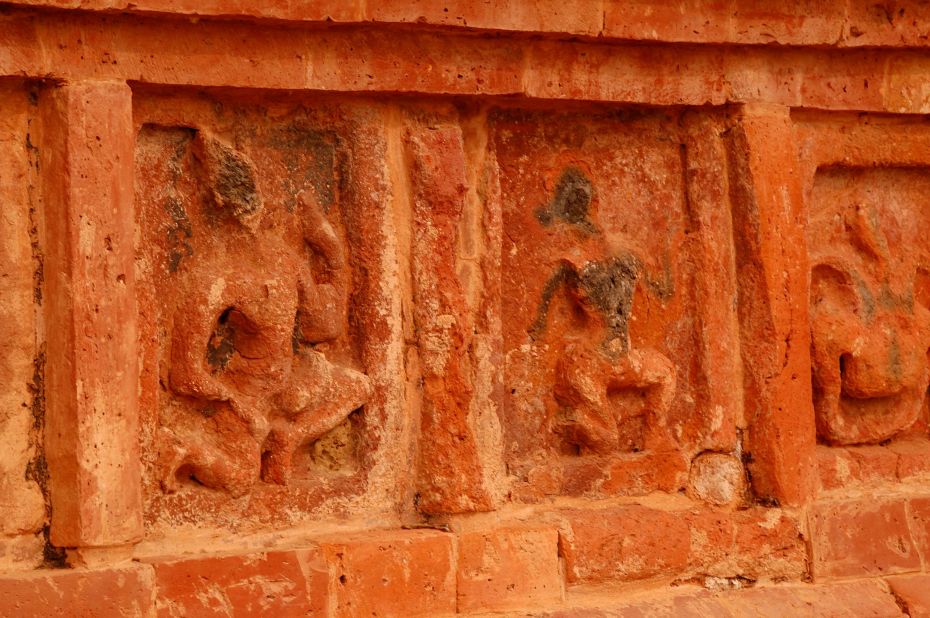
Vikramashila wall carvings. Photo by Saurav Sen Tonandada, Public Domain via Wikimedia Commons.
Adjacent to the former library, we came across an entrance to a man-made underground cave. It was around one meter (3 feet) square. Perhaps monks did retreat there in the dark, with the entrance to the cave sealed with a large rock, as they did in Tibet. According to a local man we spoke to, it has a secret passage to Bateshwar Temple, located beside the Ganges river 4 kilometers (3 miles) away. This is now a Shiva temple, but is said to feature Buddha statues as well as historic links to practitioners from Nalanda and Vikramashila. We didn’t have the time to explore it—next trip!

Ladakhi Lama circumambulating at Vikramashila, India, October 2016. Photo by Ven. Thubten Tsundue.
As sunset approached, crowds of local people arrived at the ruined monastery to enjoy the site and feel its blessings. It seems a shame that few pilgrims now visit Vikramashila, unlike Nalanda, which is much closer to Bodhgaya. Before leaving, we hung prayer flags in a small grove of trees behind the former library. Then, at 5 p.m., we reluctantly returned to our jeep as the gates closed, to drive to nearby Kahalgaon where we would spend the night before departing in the morning for Root Institute.
Being at Vikramashila was truly amazing—following in the footsteps of the great scholars and practitioners who preceded us; walking and sitting where they walked and sat, seeing where they studied and meditated and gained realizations. Their presence was still palpable. As Lama Zopa Rinpoche says, even the stones are blessed. Vikramashila’s sanctity struck me then and the feeling remains with me now. Going on pilgrimage is a reminder that holy places, with their precious blessings, still exist. And visiting the places where the holy beings we encounter in texts really lived and taught—what an inspiration!
Background: On the History of Vikramashila
In chapter 6 of Becoming Enlightened, His Holiness the Dalai Lama talks about Vikramashila, saying, “Most of the great Buddhist authors of Sanskrit texts were Nalanda scholars, and later when another great center, Vikramashila, formed, it used Nalanda’s texts and methods of study. … The great Indian figures from whom the four major Tibetan sects derive—Shantarakshita and Padmasambhava for the Old Translation sect of Nyingma, Virupa for the Sakya sect, Naropa for the Kagyu sect, and Atisha for the Gelug sect—were all great scholars at Nalanda or its derivative, Vikramashila. … In the eleventh century the Indian scholar-yogi Atisha, who was born in Bengal in a royal family and whose home institution of learning was Vikramashila, came to Tibet … [where he] composed Lamp for the Path to Enlightenment.”
Taranatha (1575-1634), a prolific writer and renowned scholar from Tibet, states in chapter 30 of his History of Buddhism in India, “King Dharmapala built Vikramashila in the north of Magadha, on the bank of the Ganga on the top of a hillock. The central temple had a human size statue of the Mahabodhi [temple]. Around it, there were fifty-three smaller temples of Guhyasamaja and fifty-four common temples, thus one hundred and eight temples.” Taranatha points out that, although it was the devout King Dharmapala who was responsible for the construction of Vikramashila, the inspiration came from the monk-scholar Haribhadra (700-770), a disciple of Shantarakshita. Historians agree that Vikramashila was consecrated in the late eighth century or early ninth century, after Haribhadra’s passing, by his disciple Buddhajnanapada. It became a center for both sutra and tantra, enduring for approximately four centuries.
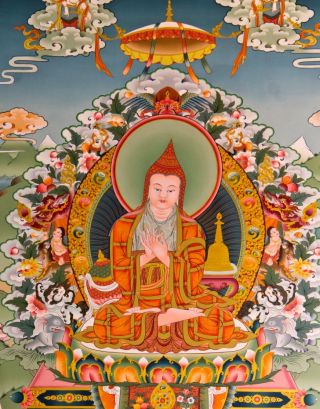
A painting depicting Atisha at Kopan’s Khachoe Chakyil Ling nunnery, Nepal, 2016. Photo by Harald Weichhart.
Atisha (982-1054) was Vikramashila’s most celebrated son. He had more than 150 teachers, and was famous as a teacher, debater, and composer of texts. One text he is known to have written at Vikramashila was A Song: Mind Deliverance from Rebirth. It was from Vikramashila in 1042 that Atisha, at the age of sixty, traveled to Tibet at the invitation of its king, Yeshe Öd. Atisha is said to have transported sixty loads of texts with his delegation on horseback to Tibet via Nepal, a journey across arduous terrain that took many months. As prophesied by Avalokiteshvara and Tara, his life was shortened by twenty years by going to Tibet, where he died at age seventy-two. Yet for Tibet, his teachings initiated a golden age of Dharma, particularly because of the popularity of his Lamp for the Path to Enlightenment. The work was written in Tibet particularly for Tibetans, and launched the tradition of lamrim or “stages of the path” literature.
Taranatha names nine prominent teachers from Vikramashila after Atisha, ending with the Kashmiri master Sakyasri (1127-1225). Sakyasri and other scholars fled Vikramashila just in time to escape the invasions that destroyed the monastery. Fortunately, by the time Vikramashila was burned, many Buddhist texts had been preserved in China and Tibet, so all was not lost.
Root Institute is planning a meditative pilgrimage to Vikramashila for December 16-19, 2017. For information, please visit www.rootinstitute.ngo.
Mandala is offered as a benefit to supporters of the Friends of FPMT program, which provides funding for the educational, charitable and online work of FPMT.
- Tagged: annie mcghee, in-depth stories, lama atisha, nalanda, pilgrimage, vikramashila
- Home
- News/Media
- Study & Practice
- About FPMT Education Services
- Latest News
- Programs
- New to Buddhism?
- Buddhist Mind Science: Activating Your Potential
- Heart Advice for Death and Dying
- Discovering Buddhism
- Living in the Path
- Exploring Buddhism
- FPMT Basic Program
- FPMT Masters Program
- FPMT In-Depth Meditation Training
- Maitripa College
- Lotsawa Rinchen Zangpo Translator Program
- Universal Education for Compassion & Wisdom
- Online Learning Center
- Prayers & Practice Materials
- Overview of Prayers & Practices
- Full Catalogue of Prayers & Practice Materials
- Explore Popular Topics
- Benefiting Animals
- Chenrezig Resources
- Death & Dying Resources
- Lama Chopa (Guru Puja)
- Lama Zopa Rinpoche: Compendium of Precious Instructions
- Lama Zopa Rinpoche: Life Practice Advice
- Lama Zopa Rinpoche Practice Series
- Lamrim Resources
- Mantras
- Prayer Book Updates
- Purification Practices
- Sutras
- Thought Transformation (Lojong)
- Audio Materials
- Dharma Dates – Tibetan Calendar
- Translation Services
- Publishing Services
- Teachings and Advice
- Find Teachings and Advice
- Lama Zopa Rinpoche Advice Page
- Lama Zopa Rinpoche: Compendium of Precious Instructions
- Lama Zopa Rinpoche Video Teachings
- ༧སྐྱབས་རྗེ་བཟོད་པ་རིན་པོ་ཆེ་མཆོག་ནས་སྩལ་བའི་བཀའ་སློབ་བརྙན་འཕྲིན།
- Podcasts
- Lama Yeshe Wisdom Archive
- Buddhism FAQ
- Dharma for Young People
- Resources on Holy Objects
- Ways to Offer Support
- Centers
- Affiliates Area
- Teachers
- Projects
- Charitable Projects
- Make a Donation
- Applying for Grants
- News about Projects
- Other Projects within FPMT
- Support International Office
- Projects Photo Galleries
- Give Where Most Needed
- FPMT
- Shop
Translate*
*powered by Google TranslateTranslation of pages on fpmt.org is performed by Google Translate, a third party service which FPMT has no control over. The service provides automated computer translations that are only an approximation of the websites' original content. The translations should not be considered exact and only used as a rough guide.Death could come any minute so transform your life into Dharma.







